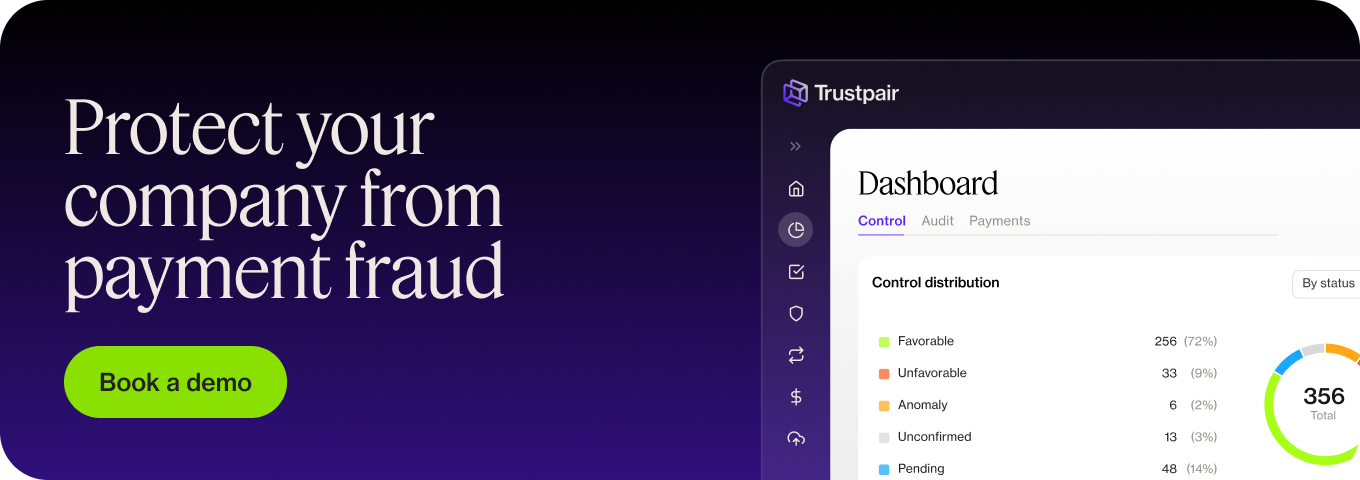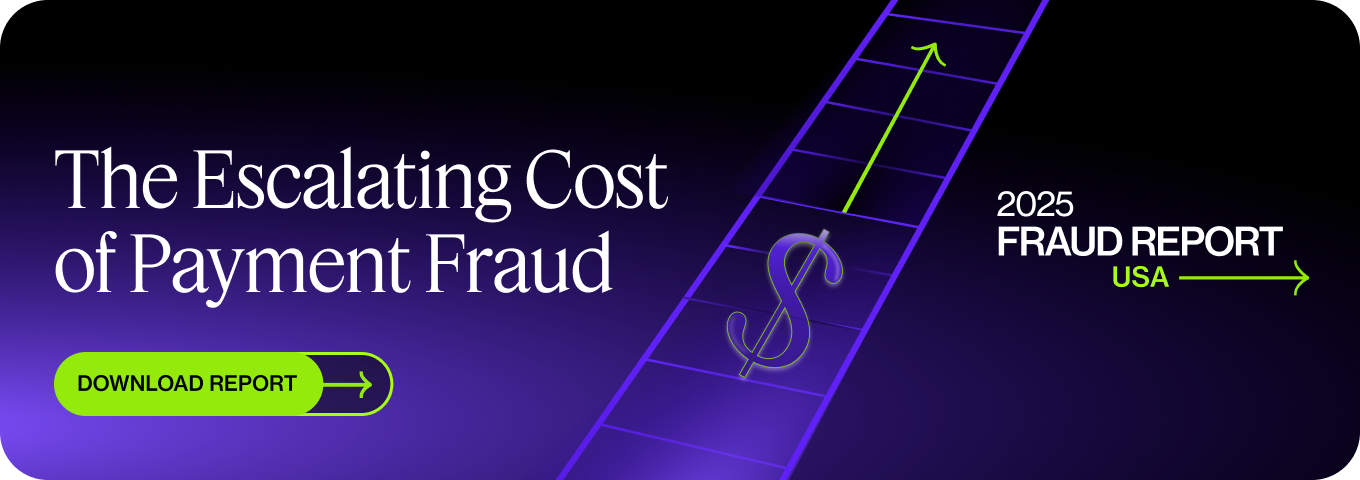At least 73% of businesses had implemented some form of automation by the beginning of this decade – and accounts payable automation falls at the core of most of these companies. It’s well-documented that manual AP processes increase the risk of errors and fraud, and generally increase the workload. But AP automation can transform your process and offer total control and visibility over the business funds.
Trustpair also secures your accounts payable process by reducing the risk of fraud for AP teams and simplifying the bank accounts validation process. Contact an expert to learn more!
What is accounts payable automation?
Accounts payable automation is an essential part of any finance cycle.
Why are accounts payable so important anyway?
The AP department makes it possible to effectively manage the business cash flow and facilitates the ongoing process from start to finish. From setting a budget to ordering goods, and quality-checking to then paying your merchants – the accounts payable function makes it all possible. The AP department effectively controls the business’ strategic direction.
Therefore, streamlining the accounts payable process is the best way to add value. Instead of relying on clunky processes without rhyme or reason, automation brings the tried and tested best practices to the forefront of your operations. Thus, your AP team can work “on” the business, instead of “in” it.
AP Automation, a definition
Accounts payable automation describes the transformation from physical to digital company finances. It’s one of the benefits of digital transformation for businesses. The traditional accounts payable process encompasses the likes of:
- Supplier vetting
- Order forms
- Inventory management
- Three-way matching (purchase order to shipping form to the invoice)
- Invoice processing and more
But instead of physically counting the stock, or dropping off paper copies of the invoice into the right person’s paper tray, automation makes life so much easier. It helps to prevent duplicates and can lead to a truly touchless process. Replace manual data with online programs or digital mechanisms, working with ERP systems to seamlessly manage procurement. AP automation allows your business to trigger steps to start and finish without the need for human oversight.
How does accounts payable automation work?
AP automation streamlines your finance processes in order to provide transparency and strengthen internal controls. It works by using software programs throughout each stage of your accounts payable process (or, more preferably, one program to cover all phases). Your employees operate these programs, which run with far less human interaction.
Here are some examples of finance automation within accounts payable:
- Automatic re-ordering of stock once inventory drops below a set threshold
- Payment approval notice sent to two senior managers upon successful invoice matching
- Supplier portal allows suppliers to submit invoices securely without the risk of interception from fraudsters
In case it’s not yet clear why accounts payable automation is the way forward for businesses looking to scale efficiently, let’s dive into some of the benefits.
What are the benefits of accounts payable automation?
Undergoing a digital finance transformation is an investment – but for accounts payable in particular, the rewards can be unrivaled.
More time and productivity
The most obvious benefit of automation is its ability to save time. Your team no longer has to rely on manual checks or slow data entry. Instead, integrations make it possible to transfer the flow of information from one program to another, instantly.
For example, you can use AP software to qualify for early payment discounts. AP automation can cut your time to payment from up to 90 days to as little as 4. Specifically, this relies on machine learning technology to help you process invoice information.
Plus, you can use a program that compares order forms to shipment forms line-by-line, ensuring that no stock is missing. Many larger suppliers offer a discount of between 5-10% for stockists who pay within 2 weeks of receiving the invoice.
Fewer human mistakes
Workflow automation is less about replacing human labor and more about supporting your people in completing their work. The addition of automation within your accounts payable processes means they are less susceptible to errors. In fact, 66% of organizations apply automation to augment human performance, with a further 14% focused on avoiding mistakes.
One key area where errors decrease is through reporting. The old way required very high attention to detail and carried a high risk of mistakes:
- Open each KPI program
- Find the right metric
- Copy and paste the metric into a document or spreadsheet
- Analyze the numbers
- Copy and paste the analysis into a report document
This traditional process has the potential to be riddled with errors since there are a number of vulnerable points where data is transferred by hand. Instead, process automation can look like this:
- Open your KPI program and head to the dashboard
- Select the KPIs you would like to include in the report and let the program create it automatically
- Export
By keeping all of the data in its original source, it’s less likely to be corrupted or changed.
Improved cash flow management
Accounts payable automation improves cash flow because of the difference it makes to transparency. By improving control over AP systems, automation allows your finance managers to easily access the information they need.
From a budgeting point of view, this means it’s much simpler to see what’s coming in and your committed outgoings. Plus, automation gives you the ability to play with different scenarios, “if this, then that”. Accounts payable departments can make the most of this by inputting different figures, optimizing payment times, and vetting potential suppliers. This helps them to figure out what makes the most sense for cash flow management.
Fewer risks of fraud
Payments fraud can be perpetrated in many different ways:
- Vendor fraud: someone impersonates your real vendor and asks to change the real bank details to their own
- Bank or wire transfer fraud: fraudsters hack into your payment system and send themself payments
- Third-party fraud: also known as identity theft, a third party impersonates a genuine customer and buys products or services with fake or stolen credentials
- Accounts payable fraud: business email compromise is one of the most popular types of AP fraud, but others exist such as billing schemes or ACH fraud
Taking away many of the human elements in accounts payable means reducing the risk of fraud.
Fraud prevention platforms like Trustpair help AP departments go one step further when it comes to fraud prevention and detection. Trustpair blocks payment fraud through the automation of credential-checking. It means that accounts are constantly authenticated against financial, company, and location data in order to verify payments. What’s more, if suspicious activity is identified, payments are instantly blocked through Trustpair’s secure technology.
Learn more about b2b payment fraud in our latest fraud report.
How to choose the right AP automation tool?
Choosing the right AP automation software starts with mapping out your current process. Then, it’s about deciding which features are right for your business functions and adapting your existing accounts payable systems to fit.
Key features to look for in a tool
Here are some of the most important features for companies wishing to digitally transform their accounts payable process:
- Security of funds
- Speed of processes
- Accessibility
Security of funds
No matter which tools you choose – they would be pointless without keeping your finances safe. So checking out the security and privacy features of the software is important – a program without a history of data breaches can help give peace of mind here.
Industry standards vary with regard to best practices. However, checking for credentials should provide some confidence in how secure your finances will be.
Speed of processes
If you’re utilizing automation to streamline your accounts payable process, then the time taken to achieve steps like invoice approval, three-way matching or supplier onboarding is likely to be important.
Ask the software team about how fast these processes can be applied, and compare the time for your employees. It wouldn’t make sense to achieve “faster” AP automation processing if your team members needed to spend more time on the tasks, would it?
Accessibility
Ease of use and accessibility are two very key considerations when working with new software. Particularly, whether your staff can access all the information they need in a single dashboard, and whether the program offers intuitive insights for working with the data.
Consider whether you can add or take away features from the main dashboard, and if the ERP integrates with other platforms. This way, you’ll be able to gather all your insights in one place and gain total visibility (and control) over accounts payable.
The best tools on the market
The best tools on the market have one thing in common: slick workflows that make it simple for your team to gain time and make better impacts. From accounts payable automation to bookkeeping software, the best-designed tools work uniquely with your business to transform your processes.
Some of the most famous AP tools include:
Tools like Trustpair are the ultimate way of securing your AP process by fighting payment fraud. Integrating with third-party programs to secure your data all the way through the payment chain. This means peace of mind for your suppliers and faster, more intelligent systems for you.
To conclude
Manage invoicing, the inventory, and your accounting system in a completely paperless way. Electronically approve financial documents and improve cash flow for better business budgeting. Match up payables and accounts receivable by transforming your business with accounts payable automation.






